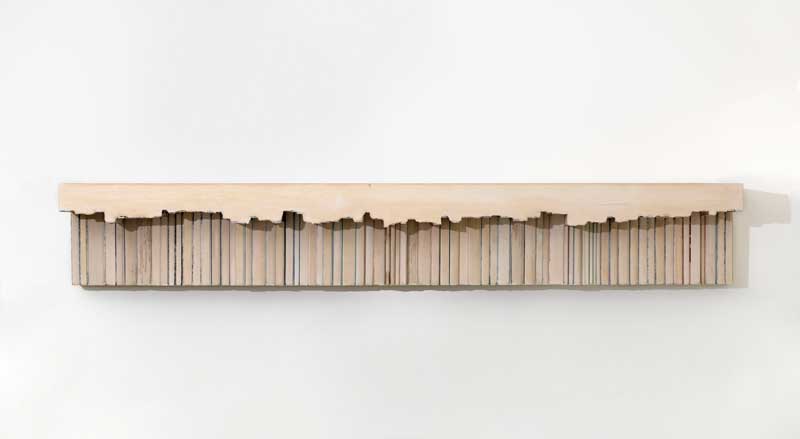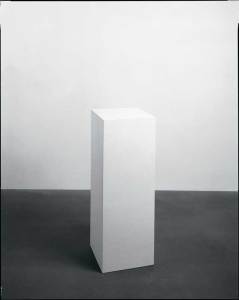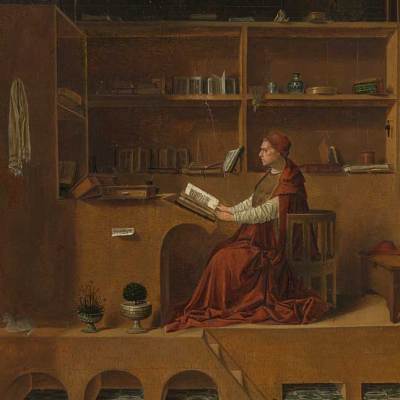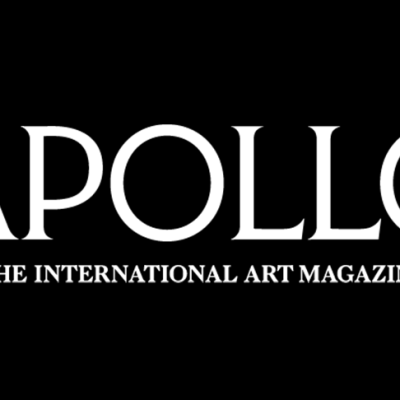A cacophony of whispering, muttering voices ricochet around the empty staircase of Blain|Southern’s Hanover Square Gallery. They issue from Bill Viola’s sound installation Presence (1995), one of the works in the group show ‘This Is Where I Am’. The name is taken from the title of philosopher Gaston Bachelard’s The Poetics of Space (1958), and the works assembled explore ideas of the void and emptiness, and the dialectic between absence and presence in art from the 1960s to today. Comprising of installation, painting and sculpture, the show boasts big 20th-century names, including Gerhard Richter, Carl Andre and Donald Judd.
Untitled (1969), Donald Judd © the artist. Image courtesy of the artist and Blain|Southern. Photo: Prudence Cuming 23 August 2013

In the foyer, when you first walk in, there is a skeletal bronze sculpture, reminiscent of shooting targets. At first, I can’t work out what it is, and then it becomes apparent that it’s the stripped down frame of a park bench: a piece of urban detritus. It is Bench (1995) by British artist and curator Keith Coventry, one of the original YBAs included in the Royal Academy’s 1997 ‘Sensation’ exhibition. Through the removal of the wooden seat, the bench is stripped of its utility, formality usurps functionality, and the emptiness or void present in the work suggests urban decay.
In the main gallery, Carl Andre’s 36 Aluminum Lock Square (1968) both occupies and empties the space. Covering almost the entire floor surface, it is made from 36 rusted squares of aluminum arranged in a grid formation. By extending into the physical remit of the viewer, the minimalist sculpture explores the co-dependent relationship of absence and presence. Nearby is Donald Judd’s Untitled (1969), a macho, angular sculpture that visually and materially echoes Andre’s work. A long, hollow aluminum tube rests upon a set of aluminum oblongs attached to the wall. The empty spaces between each are the same as the size of the blocks, the differences creating a Fibonacci sequence, exploring how sculptural space cannot exist without empty space.
Untitled (Paperbacks) (1990s), Rachel Whiteread © the artist. Image courtesy of the artist and Blain|Southern. Photo: Todd White 5 June 2014

In the second room is my favourite piece in the show. Rachel Whiteread’s Untitled (paperbacks) (2000) is a delicate, intricate plaster cast of a bookshelf, made of plaster, polystyrene and steel. Each page of the books is visible, and the colour from their spines has transferred onto the plaster, but it is a reverse impression. Through the books’ absence, their previous presence is suggested, creating a ghostly, vacuous impression of what was once there.
Also in the room is a flat, one-dimensional resin painting in a clip frame by Gerhard Richter. Called Schwarz, Rot, Gold (Black, Red, Gold) (1999), it consists of three rectangles of colour, recalling the German flag. Created alongside Richter’s commission for the entrance hall of the Reichstag to mark the reunification of Germany, the blank reflective spaces aim to inspire memory and reflection, but instead, in this context, that emptiness is perhaps overridden by the artist’s fame.
Untitled (A Curse) (1992), Tom Friedman © the artist. Image courtesy the artist and Harry Handelsman

With a tight, well thought out curatorial concept, it is interesting to consider how absence gives form to space. Some works, like Tom Friedman’s Untitled (a curse) (1992) playfully and illuminatingly explore the concept. Floating 11 inches over an empty pedestal, the work consists of an 11-inch sphere of space that has been cursed by a witch. The ‘void’ is the presence. However, at times, the artists’ own fame threatens to obstruct the contemplative voids, filling them with their own phantom presence.
‘The Space Where I Am’ is at Blain|Southern Gallery until 27 September.



